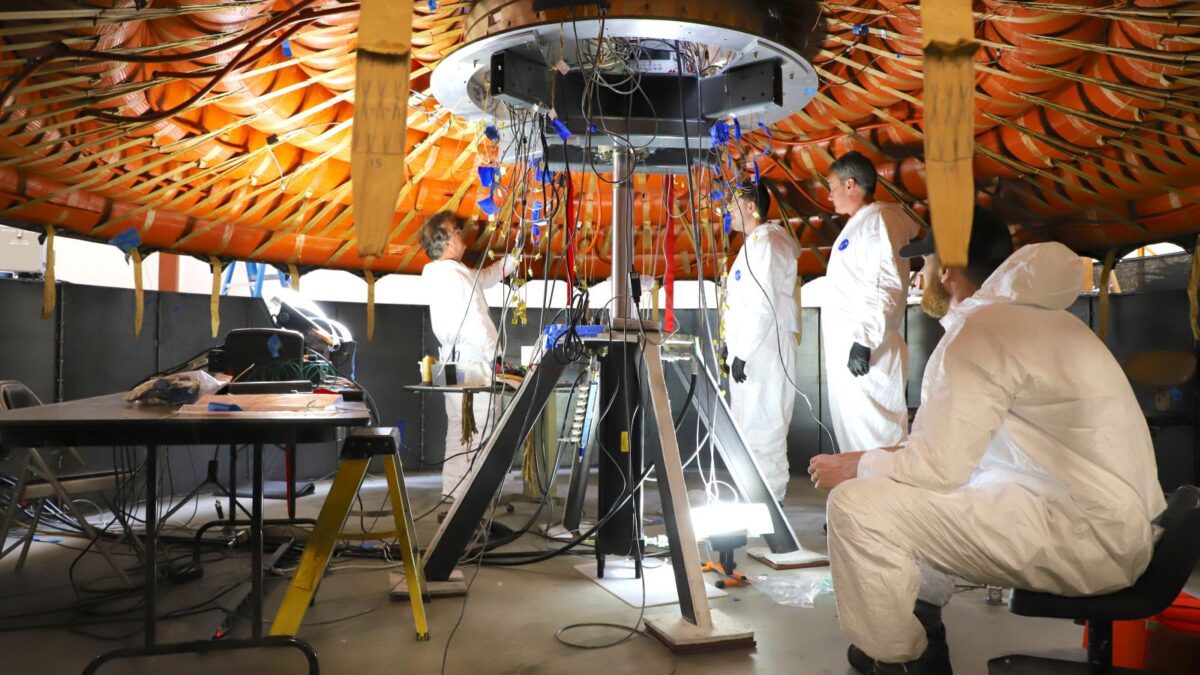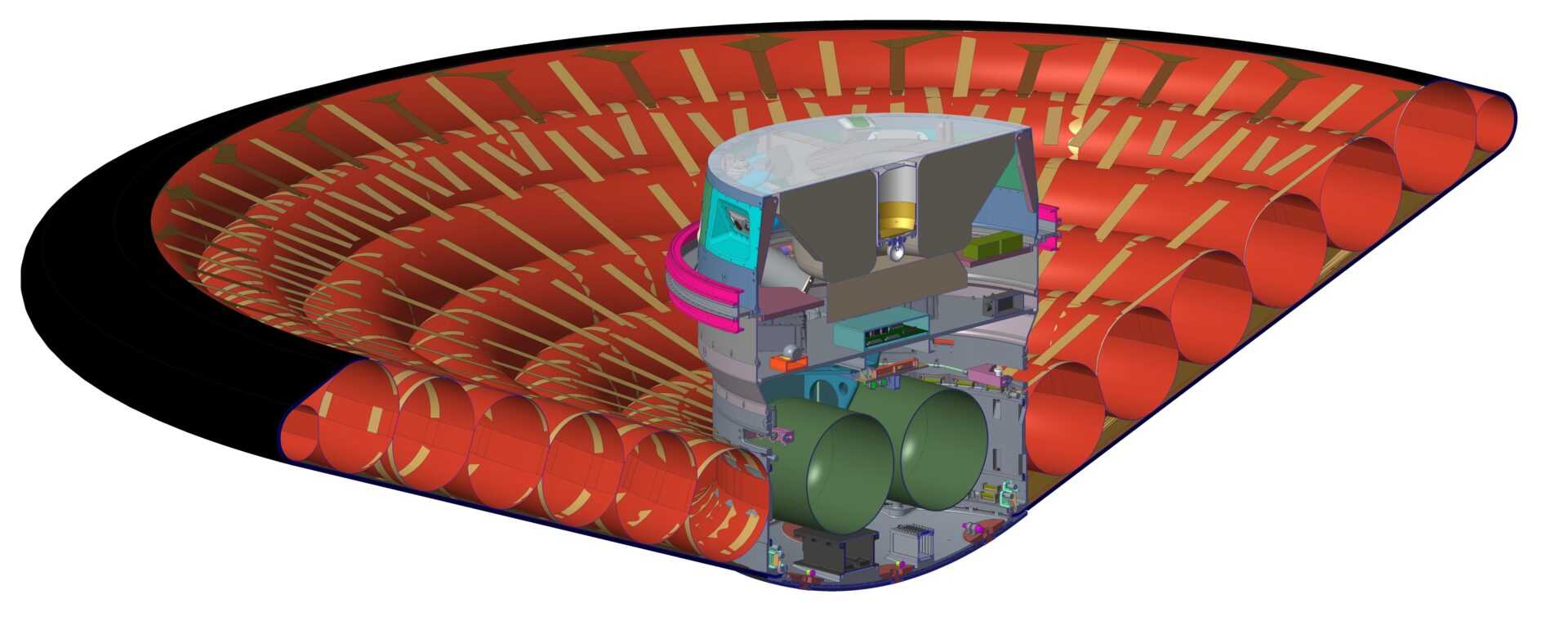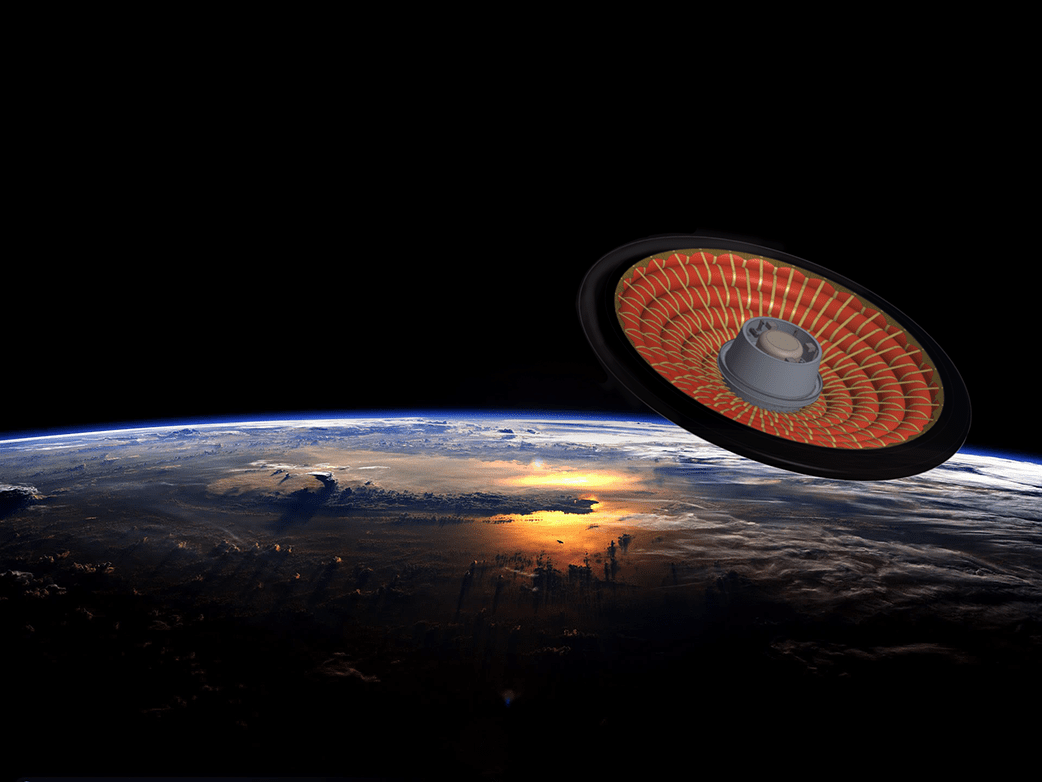Μια διαφορετική ιδέα δοκιμάζουν οι Αμερικανοί. Το Inflatable Decelerator (LOFTID) είναι μια ιδέα περίεργη για το…
…πως θα μπορούσε να επιβραδύνει πριν εισέλθει στην ατμόσφαιρα της Γης ένα κατασκεύασμα. Δείτε τι έχουνε σκαρφιστεί και θέλουν να δοκιμάσουν στο Low-Earth Orbit Flight Test με το Inflatable Decelerator (LOFTID) technology demonstration οι τρελο-επιστήμονες.
Το LOFTID reentry όχημα είναι προγραμματισμένο να εκτοξευτεί όχι νωρίτερα από την 1η Νοεμβρίου, 2022 με έναν United Launch Alliance Atlas V φορέα ως secondary payload μαζί με το Joint Polar Surveyor System-2 (JPSS-2), έναν δορυφόρο για τον καιρό – polar-orbiting weather satellite.
Μόλις ο JPSS-2 φτάσει στην τροχιά του, το LOFTID θα μπει σε πορεία επανεισόδου – reentry trajectory – από την low-Earth τροχιά για να γίνει επίδειξη του inflatable aeroshell και της ασπίδας θερμότητας να επιβραδυνθούν και να επιβιώσουν από την επανείσοδο.
Λίγα παραπάνω εδώ:
NASA’s Low-Earth Orbit Flight Test of an Inflatable Decelerator, or LOFTID, is demonstrating a cross-cutting aeroshell — a type of heat shield — for atmospheric re-entry. For destinations with an atmosphere, one of the challenges NASA faces is how to deliver heavy payloads (experiments, equipment, and people) because current rigid aeroshells are constrained by a rocket’s shroud size. One answer is an inflatable aeroshell that can be deployed to a scale much larger than the shroud. This technology enables a variety of proposed NASA missions to destinations such as Mars, Venus, Titan as well as return to Earth.
When a spacecraft enters an atmosphere, aerodynamic forces act upon it. Specifically, aerodynamic drag helps to slow it down, converting its kinetic energy into heat. Utilizing atmospheric drag is the most mass-efficient method to slow down a spacecraft.
The atmosphere of Mars is much less dense than that of Earth and provides an extreme challenge for aerodynamic deceleration. The atmosphere is thick enough to provide some drag, but too thin to decelerate the spacecraft as quickly as it would in Earth’s atmosphere. LOFTID’s large deployable aeroshell — an inflatable structure protected by a flexible heat shield — acts as a giant brake as it traverses the Martian atmosphere. The large aeroshell creates more drag than a traditional, smaller rigid aeroshell. It begins slowing down in the upper reaches of the atmosphere, allowing the spacecraft to decelerate sooner, at higher altitude, while experiencing less intense heating.
LOFTID is demonstrating a large aeroshell — 6 meters in diameter or about 20 feet — entry from low-Earth orbit, to demonstrate this technology in conditions relevant to many potential applications. The benefits of using the inflatable decelerator design for a variety of space applications include:
Low-Earth orbit return; free flyer, in-space manufactured materials [3 to 6-meter scale]
International Space Station down mass greater than currently possible [8 to 12-meter scale]
Lower cost access to space through launch vehicle asset recovery [12-meter scale]
The inflatable decelerator technology is scalable to both crewed and large robotic missions to Mars. Potential commercial applications include:
Low-Earth orbit return; free flyer, in-space manufactured materials [3 to 6-meter scale]
International Space Station down mass greater than currently possible [8 to 12-meter scale]Lower cost access to space through launch vehicle asset recovery [12-meter scale]
Related posts
Categories
- android World
- cinemart / music / video
- comicmania / books
- computing / social media
- consumer electronics
- design / architecture
- ecotech / electric
- exhibitions
- faq / Infographics
- futuristas / iDea
- gadgetfreak taste
- gadgets / stuff
- gaming / fun
- iOS World
- legends / special
- men's world
- military / aviation
- mobile / smartphones
- space talk
- tablets / multimedia
- tech talk / science
- transport / concept





